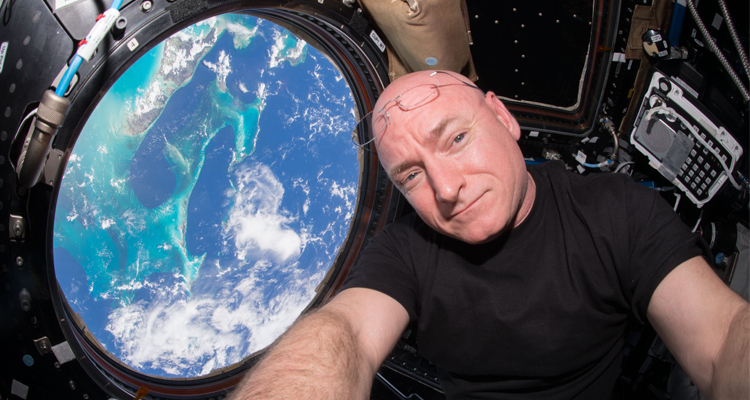Astronaut Scott Kelly has arrived home after spending almost a year on the International Space Station. It’s a fascinating story for adults and a great opportunity to get kids interested in science. From little ones just beginning to explore the world around them to teenagers getting deep into extensive science courses, kids can apply Scott Kelly’s exploration to their own experiences and studies. It might even get them looking “upward” toward a new career. Here are some things kids can learn.
The Wonder and Beauty of Being in Space
Becoming an astronaut takes years of study in science and mathematics. But, most kids’ interest is sparked by the sheer beauty of spaceflight. Scott Kelly has sent pictures of life in space back to Earth through his Instagram and Twitter accounts, including sunrises from space and stunning earth-land formations from high above. Kids interested in looking up at the stars at night—or who have glow-in-the-dark star stickers in their bedrooms—will be fascinated by what space looks like closeup.
How Space Affects People
Scott Kelly has helped NASA test ways to prevent health problems that plague astronauts. Fluids move up the body and cause stuffy noses and, possibly, vision problems. Loss of muscle mass and bone density are also common. As the fluids move up, the legs and lower blood vessels do less work as it takes less effort to push the blood back to the heart. Once astronauts get back on earth, resumption of normal circulation can cause dizziness and fainting.
Kelly has worn vacuum pants meant to keep the fluids where they should be and participated in regular monitoring to see if this new technology will help with future space missions. This is a great chance to talk to kids about gravity and the circulatory system. If they are straying away from their physics or biology homework, a conversation about the importance of these factors can get them interested again.
Gave myself a flu shot in space today for @ISS research. Your turn, @shuttlecdrkelly!
A photo posted by Scott Kelly (@stationcdrkelly) on
How the Environment Affects Health
Astronaut Scott Kelly is different from his peers in one big way: he has an identical twin brother, Mark, who is a former astronaut. NASA isn’t letting this great opportunity for study go to waste. As Scott has been tested in space, Mark has been tested on Earth. That testing continues now that both men are back on land to see how space flight affects the immune system, mental heath, and genetics. They’ve already discovered that Scott Kelly is now two inches taller than his brother, apparently the lack of gravity in space caused his spine to expand and stretch. He may lose that height difference, however, as Earth’s gravity takes affect over time.
Kids learning about genetics know that identical twins have the same DNA. Any differences between Scott and Mark must be the result of Scott’s time in space. NASA will monitor the brothers over the long-term to gather more information about how space affects the human body.
Kicked off today w/a 6:45am blood draw in my kitchen in Tucson for @NASA‘s ‘Twins Study’ of me & @StationCDRKelly. pic.twitter.com/hnEbTjn7uR
— Mark Kelly (@ShuttleCDRKelly) January 19, 2016
The Scientific Method
Coming up with a science problem is one thing. Finding a solution or proving a hypothesis is quite another. From NASA’s testing on Mark and Scott Kelly, students learn how scientific discoveries are made. Older teenagers who already excel in their science courses can gain valuable insight into the lengthy and complicated process of scientific testing, using a control subject, and ensuring the accuracy of data. It’s possible to learn from a textbook, but watching it unfold on television or through social media makes it more exciting and true-to-life for kids.
A photo posted by Scott Kelly (@stationcdrkelly) on
A New Perspective on Earth
Seeing Earth from space also gave Scott Kelly a new view of our planet, literally and figuratively. Calling Earth “fragile,” he says he’s become more aware of the consequences of pollution. “I feel more like an environmentalist since I’ve been up here,” he said. “There are parts of the Earth that are covered with pollution all the time.” His unique view of the planet can teach students the importance of being environmentally friendly and working to take care of our home in the galaxy.
NASA says most of the mission’s study results will be available in about a year. However, Scott and Mark will continue to be monitored for some years to come.





































